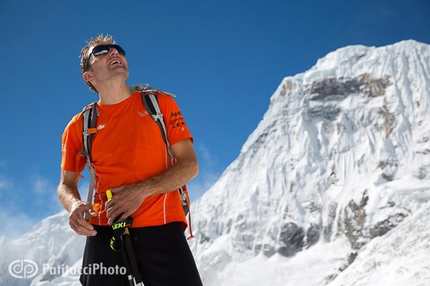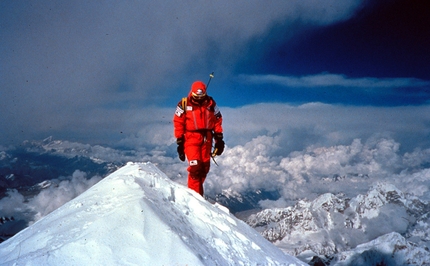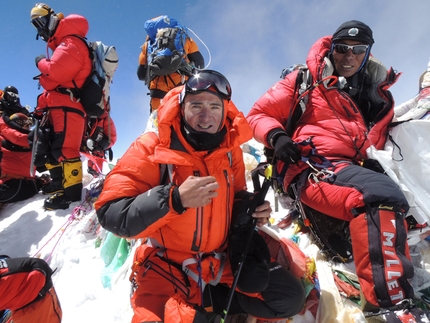Ueli Steck and the great Everest - Lhotse traverse / Pioneering mountaineering
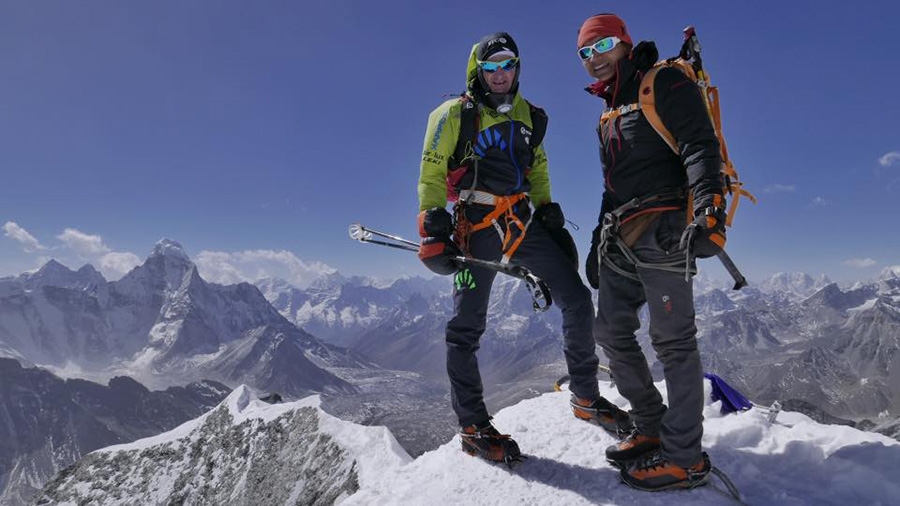
 1 / 9
1 / 9 archive Ueli Steck
archive Ueli Steck
This promises to be an extremely interesting season in the Himalayas. In the coming weeks a large number of mountaineers will attempt the high altitude peaks, including Ueli Steck, the ace Swiss alpinist who has come up with a project which, if successful, will add another important chapter to the history of mountaineering. Not just that of the Himalaya. Steck will team up with his climbing partner Tenji Sherpa to attempt the first traverse of Everest and Lhotse; this enchainment connects the 8848 meter summit of the highest mountain in the world with its gigantic neighbour, Lhotse, at 8516 meters the world’s fourth highest mountain. Naturally Steck’s plan is to do so without supplementary oxygen via a bold line of ascent… It goes without saying that this is a very difficult project indeed - dreamt of by only a few other great climbers in the past - with slim chances of success. But, as Steck explains in the following interview, this is precisely the form of alpinism that he dreams of.
Very briefly, what’s the main idea of the expedition?
Everest Lhotse in one push. The idea is to climb the Hornbein Couloir to the summit of Everest, then descend to the South Col and from there go straight up to top of Lhotse.
Why this traverse?
Well, I know I can climb Everest without supplementary oxygen, so I now want to see how long I can climb at this altitude. Doing the traverse is very interesting because on Everest and the South Col you’re always above 8000m, and then you go on to climb a second mountain. It’s kind of similar to the Alps; once you can climb one mountain, you go further, and try to link various mountains together.
How long do you think you can remain at that altitude, with that intensity and strains on the body?
I don’t know! That’s why I want to go and find out! (laughs). I think the project is very difficult, but I do think it's possible. I know I’ll have to be very careful to not climb too fast while ascending Everest, otherwise I’ll end up too tired when I reach the South Col.
Tell us more
I reckon it’s going to be a really interesting mental game and in some ways I consider it’s like dealing with a long-distance race. If you compare climbing Everest to running a 42km marathon, then the next step up could be the Everest -Lhotse 100km ultra-marathon. If you decide to do an ultra-marathon, you obviously need to be much slower during the first 42km in order to finish the 100km marathon. Yeah, it’s certainly going to be an interesting adventure.
You know that some die-hard alpinists consider you not much more than an athlete…
Yeah! But this is what I’m interested in, this is what has always driven my climbing. Discovering my own limit, seeing what is possibile. Maybe this is where I differ from many other alpinists. I’m not constantly searching for a peak that hasn’t been climbed before, this is secondary for me, what I’m after is figuring out what is possible as a human being.
Having said that, alpinists who are primarily athletes also know how to appreciate beauty and respect the mountains...
Yes, of course! This is the beauty of our sport; we’re out there and its not only about the physical test, we’re out there experiencing the mountains, living in the mountains, for all that time during expeditions. This is a really, really big and beautiful part of alpinism.
In 2000 we interviewed Hans Kammerlander and asked him about the Everest - Lhotse traverse, as Simone Moro was planning on trying it later that season. Kammerlander told us it was a project for the future generations. Erhard Loretan said the same in 2009 when we met him at the Trento Film Festival. So has the future now arrived?
This is interesting. As I said, I think the project is possibile, but I don’t know how big the step will be to climb both Everest and Lhotse, I simply cannot tell you. But it’s this that makes it interesting. The reason why I’m going to try it is because I know that it’s physically possible. When I climbed Everest in 2012, when I reached the South Col I felt well, I wasn’t wasted. I know Everest, I’ve been to that altitude a couple of times before and I know that my body can cope with altitude very well, this is why I’m going to try it.
This has never been done before. Why therefore do you want to make it even more difficult Ueli, and ascend in a loop via the Hornbein Couloir, instead of doing what other great alpinists have attempted in the past, namely the normal route up Everest and then Lhotse?
I’ve already climbed Everest up the normal route, now I want to climb it via something else. As an alpinist, climbing the Normal Route on Everest doesn’t have the same value as climbing Everest via a different route without the crowds of people. I’m simply after a bigger experience, it’s a bigger challenge that, to me, has more value. I know it’s going to be more difficult, and I have to be honest, maybe I’ll get to the top of Everest and realise that the Hornbein Couloir was way too hard and that I’m exhausted. But even then I’ll be really happy because nobody has ever repeated the Hornbein Original route. So this would already be a really, really good adventure.
What strikes us most of all about your traverse project is that you want to climb it via the route established by the Americans Tom Hornbein and Willi Unsoeld in 1963. Because this raises the bar not just once, but twice!
Yes! I like that! I’m not here to have an easy life (laughs). To be honest, when talking about technical ice, for me there’s no big difference whether I climb the Hornbein or the Normal route on Everest, I don’t think it makes a huge difference, because I’m used to "walking" up this type of terrain, so it shouldn't change a lot. For me it’s important to have big goals, big dreams and try them. And even if you don’t reach the summit, I don’t consider this as failure. Failure for me is if you don’t go out and try in the first place.
We know that you’ll attempt this adventure with a special partner. Can you introduce us to him?
Yes, I’ll be climbing with Tenji Sherpa, we’ve known each other for a long time. He belongs to a new generation of Sherpa in Nepal who really love to climb. For them, mountaineering isn’t just business. And that’s the reason why we get along so well. He’s my climbing partner on this project, he’s not the Sherpa. We climbed the Cholatse North Face together via the French route, last summer he was here in Switzerland climbing with me. Sharing this mountain with him is going to be a beautiful experience.
How strong is Tenji technically?
I have no doubt that on this type of terrain he won’t have any problems. On that type of terrain the Sherpa are super strong. Maybe the Sherpa aren’t super technical, but one has to be honest, the Hornbein Couloir has only about two pitches that are a little bit steeper, all the rest is about 45°, 50°, not super technical. It’s exactly that type of terrain that he can handle really well.
Is there anything you envy about Tenji? What qualities would you like to have, that he has?
The Sherpa are never cold, they’re never hot, they’re much better at dealing with temperatures in the mountains since they’re more used to be out there. Let me give you an example: when Tenji and I climbed Everest together in 2012 he used a Phantom Ultra mountaineering boot. The lightest in the Phantom range, without a liner, and I kept telling him "this isn’t possible, you’ll loose all your toes." But he didn’t, for him it was no problem. Had I done the same, I wouldn’t have any toes anymore, for sure. It's crazy! We’d had discussions in Scarpa about this boot because people complained that it wasn’t warm enough for climbing here in the Alps. But since then, whenever people ask me if this boot is warm enough, I tell them that it's been used to climb Everest!
If you think about the Sherpa people in general, what has struck or impressed you most?
One really interesting thing is how they’re capable of accepting a given situation. If they’re up in the mountains, they never complain and accept it for what it is. I think this is part of their culture, they accept the situation and never complain.
So let’s return to the traverse. What’s your ascent strategy?
I’ve thought of different scenarios, at present I obviously can’t tell you how fast we will ascend Everest, so much depends on conditions. We will have a good camp at Camp 2, from there I can’t tell you yet if we'll have to sleep on the West Shoulder or if we manage to climb even further. Maybe we’ll even have to make two bivouacs, this is a possibility, too.
Two bivouacs during the ascent of Everest?
Yes. But of course I don’t like the idea of two bivouacs. Departing from Camp 2, one bivouac will certainly be necessary, just because otherwise we’d be too tired when we reach the South Col. I reckon it’s possible to climb to the summit of Everest in one push from Camp 2, I’m pretty sure this is possible, but maybe we’d be too tired to continue the link up to Lhotse. So this is the general strategy, and we’ll see how this unfolds during the expedition.
Will you have established a Camp at the South Col beforehand?
I plan to climb up to the South Col and leave a tent there. We will be helped in Camp 2 by Nima Sherpa. Tenj and I plan to go up once to the South Col as acclimatisation and deposit a tent, but we know we need to be flexible. To be honest, there are so many camps at the South Col that I personally don’t think it changes much how, in the end, you do it. All the infrastructure is up there already, from others. It doesn’t affect the style much. I have to be honest, for me alpine style doesn’t exist on Everest, you simply can’t climb alpine style because there are fixed ropes all along the descent, there are tents everywhere, this really has nothing to do with alpine style anymore.
Hats off for being so sincere!
You know, I think even when people talk about a solo ascent on Everest, this is just bullshit. You can’t do that anymore, there are so many people on the mountain. The same holds true for alpine style ascent, it’s no longer possible. If you want to climb something alpine style, you need to choose a different mountain.
Talking about different mountains - last month you had an interesting experience in Nepal with Hervé Barmasse, David Göttler and Nima Sherpa. Why were you there?
Oh, just for some altitude training. It’s really good to train in the Khumbu valley, you’re at a perfect altitude, not too high, at 4700m, from there you can do some good running. Training has to be fun; I spend so much time training, it’s such a big part of an expedition that it mustn't get boring. And it’s nice to share these moments with good people, out in the Khumbu valley we had a great time together.
What do you reckon are your chances of success?
50 - 50.
That high! We imagined you’d say less!
No. 50 - 50.
So what will make this expedition a positive experience?
Of course I hope to stand on both summits, that as I said is the main goal of the expedition. But I’m also realistic and know the chances. What happens if I don’t reach both summits? Well, I want to learn, try as hard as I possibly can and even if I don’t get the summits I won’t consider it a failure at all. The only failure I can have is if something happens and one of us dies.
How do you deal with this uncertainty, this danger?
We have to accept that when we go out into the mountains there’s always an element of danger. It’s more dangerous than staying at home and watching TV. This element of danger is a big part of alpinism. Sometimes though we are too driven. I have seen people dying, this is something we have to keep in mind. Of course you want to try to reach the summit, but in the end this doesn’t change the world. You always have to be aware that you will pay the consequences if something happens; if you feel something is wrong in the mountains then maybe you should descend, because it’s just you, your problem, not for other people. That’s how I try to deal with danger, so I don’t make any pressure for myself.
Our last question Ueli, that concerns the second part of the traverse: Lhotse. Is it there where the difficulties really begin?
No. But it’s there where I imagine maybe I’ll be tired. For me the entire traverse project is complete when I’m back in Camp 2. I don’t have a real strategy just for Lhotse, I view it all as one piece, I’ll take it one step at a time. Of course, when we’re at the South Col and start ascending up Lhotse we will feel that our legs are tired, so it will be very much a mental game, just to keep on moving.
What are you looking forward to?
I’m really looking forward to switching off my phone, not having to answer emails and just go climbing! I realise that what I do is a luxury, going out climbing and switching off completely from all the rest. But it’s something that is very, very important to me, to be able on these expeditions to just be in the mountains, just climbing and doing nothing else.
When will you fly from Switzerland to Nepal and when do you think you might attempt the traverse?
I’ll leave on Saturday, and I won’t be trying the traverse before the middle of May, that’s for sure.
We wish you the best of luck Ueli, and that you enjoy your freedom in the mountains.
Thank you. Thank you very much!
www.scarpa.net
www.petzl.com
| Expo.Planetmountain | |
| Petzl | |
| S.C.A.R.P.A. | |
| www | |
| FB Ueli Steck | |



 Copia link
Copia link

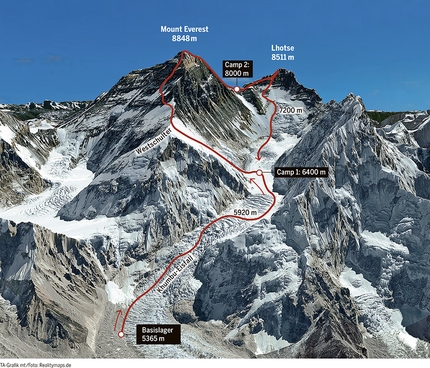
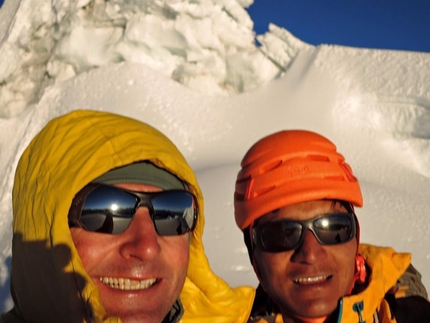
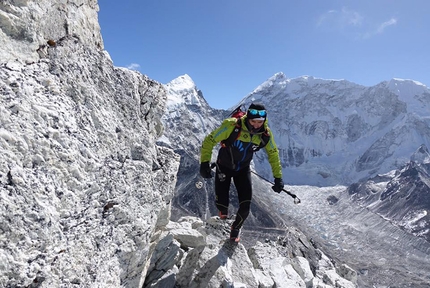
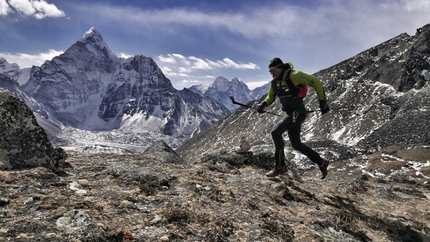
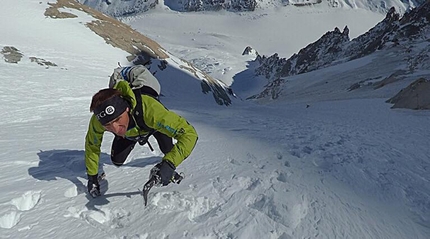
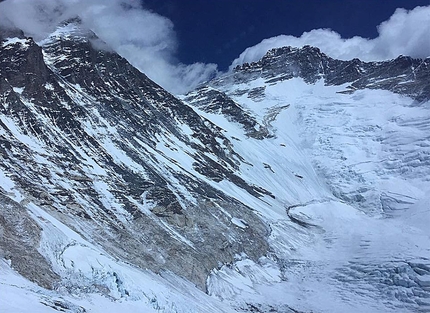
 See all photos
See all photos